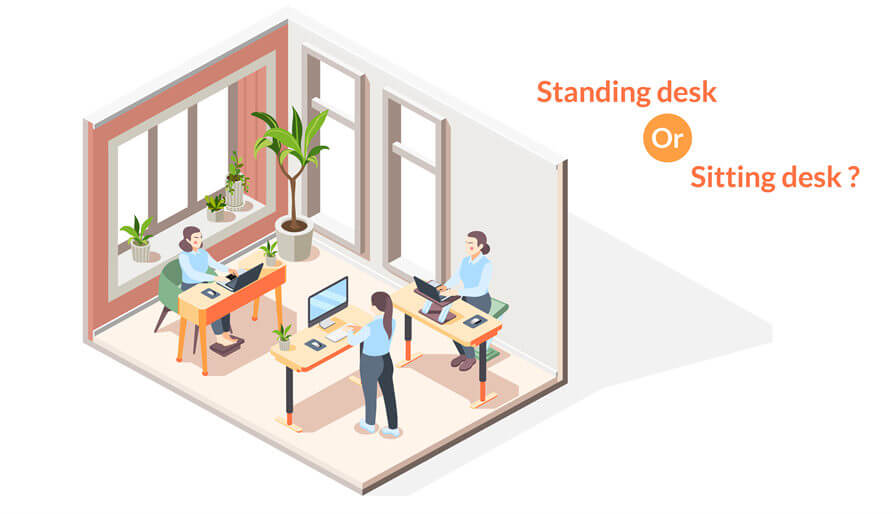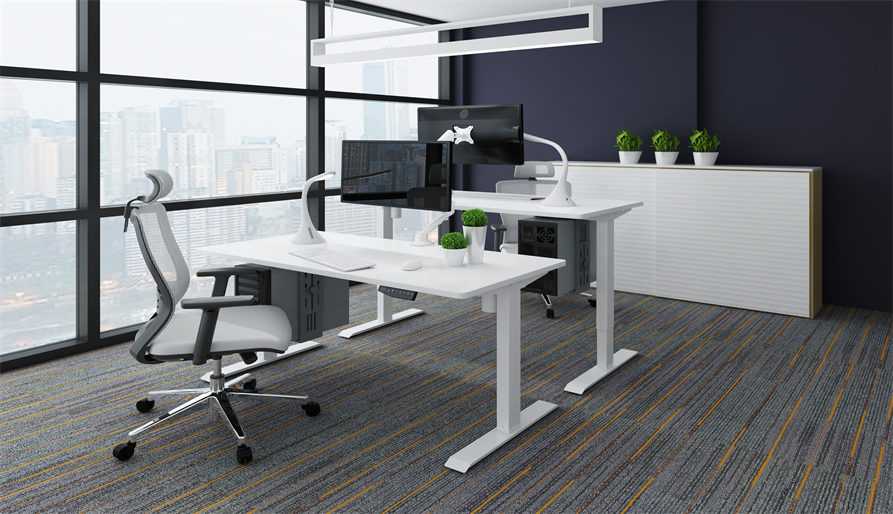desk

Battle of the Desks: Standing Desks Vs. Sitting Desks

For people who have been working for a good chunk of their lives, sitting down for 8 hours a day works itself, and if they got a chance to switch up things, then they would. Fortunately for modern employees, technology and innovation have gone a notch higher and have brought so many possibilities for the workstation.
But the question remains, which is better between standing desks and sitting desks?
To ensure we don’t make a biased verdict, we are going to explore what standing desks and sitting desks are, the advantages and disadvantages of each.
Sitting Desks
Sitting desks have been around for much longer than standing desks. By description, a sitting desk is any workstation that allows people to handle their work while seated. They are usually fixed and cannot be adjusted and although they are functional, this limited flexibility makes them very tiring to use in the long run.

Benefits of sitting desks
Bigger holding capacity: Sitting desks have a bigger holding capacity in terms of surface area and supporting heavy loads. You could place the heaviest PC and multiple monitors on top without any fear of collapse.
Shared space: Sitting desks can be shared, which can save the office a lot of money spent on buying each employee theirs. Some offices are even known to make use of a single huge desk that accommodates many people simultaneously. This saves on space and money and makes it easier for people to collaborate at work as they have easy access to each other.
Limitations of Sitting Desks
Less flexibility and comfortable: The fact that they are fixed means that flexibility is limited, and there’s very little you can do to enhance their comfort. Getting an adjustable chair is one solution, but those don’t come cheap. Once a sitting desk has been designed, that’s the end of it. It can only be moved around and nothing more.
Not ergonomic: Sitting desks are not healthy for long use. People tend to lean over too much to reach their computers and books, and this creates a gradual strain on their backs, and with time, this develops into serious health issues. You will be forced to take too many breaks to stretch, and this can interfere with your productivity.
Standing Desks
Standing desks are an innovation that has gained momentum and popularity in the last decade owing to the great flexibility they bring to the working space. They are the best investment you can ever make for your office space as they are versatile and can serve the functions of two desks for one.

Benefits of Standing Desks
Ergonomic: standing desks enable different persons to find their suitable height. They are healthier options for work as they boost metabolism by providing extra working positions. You can switch from sitting to standing any time you like, and this is a form of workout that helps you burn more calories, and this will reflect on your overall health in the long run. In a nutshell, you get two desks in one and continue handling your work without long interruptions.
Lightweight and portable: you don’t even need any help moving them around. And when you also consider how small they are, you can use them in limited spaces without any issues. The ability to move them around as you wish makes it easy for you to do your work in any part of the room or the office without interfering with what other people are doing.
Limitations of Standing Desks
They are expensive since they are designed with a lot of movable parts, from the foundation of the desk that’s made of solid metal for extra support, internal wiring for the electrical functions, and broad desktop surfaces for supporting huge loads. Getting all these features to work in tandem takes skill, and that costs a lot more than sitting desks.